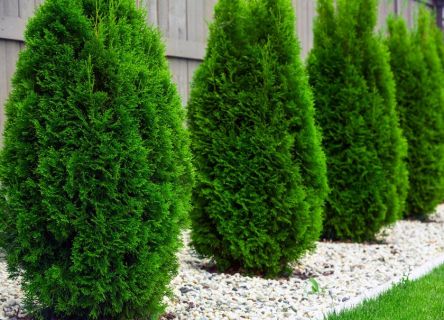Low-Maintenance Landscape Trees for Effortless Beauty: A Guide for Virginia Gardens

As Spring approaches, it's important to know that creating a beautiful landscape doesn't have to be a high-maintenance endeavor.
What Should I Consider?
Northern Virginia residents can enjoy a stunning outdoor space with the right selection of low-maintenance trees. These trees not only enhance the aesthetic appeal of your garden but also require minimal care and attention. In this blog post, we will explore some of the top low-maintenance landscape trees that thrive in Virginia's climate, allowing you to achieve effortless beauty and a vibrant outdoor environment.
Eastern Redbud (Cercis canadensis):
Known for its striking pink or purple flowers in early spring, the Eastern Redbud is a popular choice for low-maintenance landscapes in Virginia. This native tree thrives in a variety of soil conditions and is relatively drought-tolerant once established. Its heart-shaped leaves provide visual interest throughout the growing season, and its compact size makes it suitable for both small and large gardens.
Serviceberry (Amelanchier spp.):
Serviceberry, also known as Juneberry or Shadbush, is a versatile tree that adds year-round beauty to any landscape. It offers delicate white flowers in early spring, followed by edible berries enjoyed by humans and wildlife alike. In the fall, its leaves turn vibrant shades of red, orange, and yellow. Serviceberries are easy to grow, adaptable to various soil types, and require minimal pruning.
Japanese Maple (Acer palmatum):
Japanese Maples are prized for their stunning foliage, which comes in a range of colors, including red, orange, yellow, and purple. These trees add an elegant touch to any landscape with their delicate, lacy leaves. While they appreciate some protection from harsh afternoon sun and wind, Japanese Maples are generally low-maintenance and require minimal pruning or fertilization.
River Birch (Betula nigra):
River Birch is a hardy and adaptable tree that thrives in Virginia's climate. Its exfoliating bark provides year-round visual interest, with shades of creamy white, salmon, and cinnamon peeling off to reveal inner layers of reddish-brown bark. River Birch is resistant to many common birch tree pests and diseases, making it a low-maintenance choice for landscapes. It also tolerates wet soils, making it an ideal option for areas prone to occasional flooding.
American Holly (Ilex opaca):
For evergreen beauty and low maintenance, consider planting American Holly in your Virginia landscape. With its glossy, dark green leaves and red berries, this native tree adds year-round interest. American Holly is drought-tolerant once established and requires minimal pruning. It also serves as a valuable wildlife habitat, attracting birds with its winter berries.
Bald Cypress (Taxodium distichum):
Bald Cypress is a majestic tree that thrives in wet areas, making it an excellent choice for Virginia's swampy or poorly drained landscapes. It features feathery foliage that turns a beautiful russet color in the fall before dropping. Bald Cypress is highly adaptable, pest-resistant, and requires little to no pruning.
Conclusion:
Creating a stunning and low-maintenance landscape in Virginia is entirely achievable with the right selection of trees. By incorporating Eastern Redbud, Serviceberry, Japanese Maple, River Birch, American Holly, or Bald Cypress into your garden, you can enjoy effortless beauty and year-round visual interest. These trees are well-suited to Virginia's climate, requiring minimal care while providing maximum impact. Enhance your outdoor space by starting with a call to Campbell's Tree Service today!
